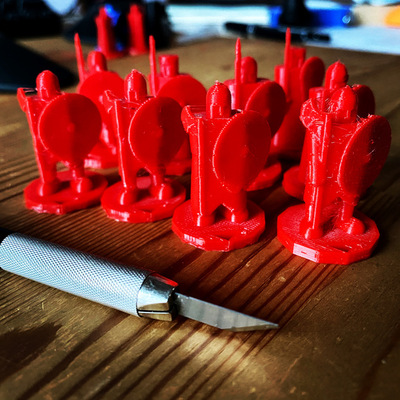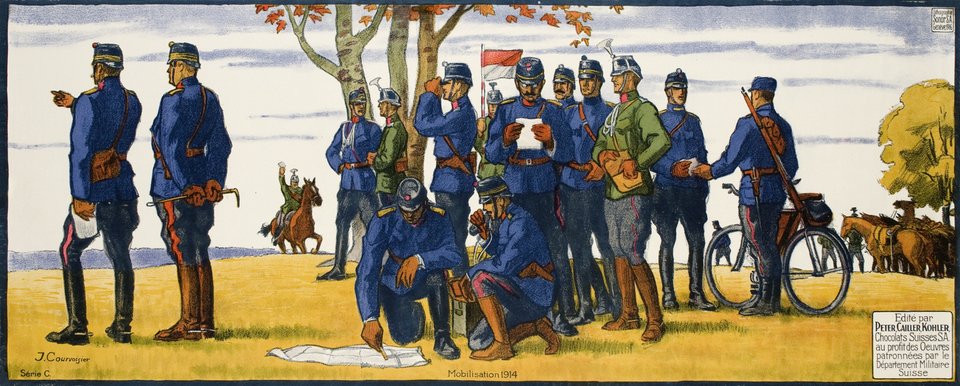
|
Slower Together |
| 2021-05-06 |
Slower Together
This is a translation of Ensemble tout devient plus lent (September 2012) by retired Colonel Michel Goya. I am grateful for his kind authorization to translate and publish here.

In The Mythical Man-Month: Essays on Software Engineering (1975) Frederick Brooks describe his experience with IBM and software development. He shows the impact on the completion date of increasing the headcount of a project. His conclusion is simple : increasing human resources starts accelerating the project by labour division, then, after a threshold, the complexity of the project requires time to train the newly arrived and there is an exponential increase in the number of interactions. For a group of ten persons, the number of 2 to 2 possible interactions is 45, for a group of a hundred persons, it raises to 4'950. There is no need for everybody to meet, but it's easy to see that, with the increase of the headcount, the share of coordination information (and training information) increases too. Most of the time is then spent in formal or informal meetings, in reading and writing emails, or on the phone, to the detriment of actual work.
Brooks' conclusion is that to increase the performance of a group at producing ideas, a general staff for example, one has to reduce its size. But the usual reaction is rather inverse, the visibly saturated group gets reinforced. The immediate gain of the reinforcement then shadows the negative effects on the whole of the structure, like the necessity to create new coordination cells or "coherence" cells. Threshold effects may manifest, like the creation of managers of elevated level to operate the new commandment structures, each with assistant, secretary, even driver. To this hierarchical threshold a memory threshold soon gets added, as the personnel of the structure, constantly renewed, forgot that, at a certain era, the structure performed better with fewer members. The phenomena then feeds itself and we reach, for example, to a multiplication by 25 of the officer headcount in a british brigade staff from 1918 to 2003. There are certainly new functions to perform but they are far from justifying such an inflation.
After throwing people at a problem, the other "evident" solution to the saturation problem is the adoption of new technologies allowing to increase considerably the flow rate of information. Here as well, the resulting effect is often inverse. Having to choose between a higher velocity for the same volume of information and a bigger volume for the same velocity, the heavier organizations almost always favour the second option. The information that has to be handled becomes suffocating.
In Command in War, Martin Van Creveld describes american staffs in the Vietnam war, by far the most modern in the world with their copiers, and transistor radios. The problem is that servicing all those communication and information systems soon absorbs an important share of personnel (23'000 men for the 1st transmission brigade in charge of inter-theater communication, and 1 man in 5 in each division). Communications lines become so saturated that each service attempts to get around the problem by creating its own network, the operation HQ of a division staff ends up disposing of 35 different lines of communication. This congestion, associated with the complexity of structures, has for first consequence to slow down considerably planification. An offensive operation of 30'000 men, like Cedar Falls in 1967 requires four months of preparation. The second consequence is that, in order to understand what is happening, the heads have to go and have a direct look in the field. It thus is not a rare occurence for a captain, entangled by enemy fire and trying to organize supporting fire, to see the helicopter of his superior appearing overhead and often the helicopter of the superior of this superior. They all ask for explications and thus contribute to the slow down of the maneuver and to the loss of initiative.
In The Human Face of War, Jim Storr describes the functioning of the first digitalized staffs during Operation Telic in Iraq in 2003, with 25 pages brigade operation orders where the task only appears at page 10. A lot of orders that could have been reduced to ten lines were reaching 3 to 4 pages. Instead of shrinking with time since certain situation elements do not change from the beginning to the end of the campaign, the volume and the elaboration time of the orders increase. The british brigades thus receive five preparatory orders from the division... one day after the action began. On the other hand, after the capture of Bassorah, the same brigades operated for 15 days without any orders, the division staff unable to follow the tempo.
It is interesting to note that, meanwhile, indian big units had kept the structures inherited from the 1945 british army to which they simply added the twenty-first century technologies. They create orders four times faster than british equivalent units. Let's remember too that during Market Garden in September 1944, the Allied were stopped and destroyed in Arnhem by a german armored corp equivalent in size to the british forces during Telic. The staff of the german corp gave oral orders after one hour and the written order (two pages with a few annexes) after three hours, and the order was valid during the whole duration of the fight.
